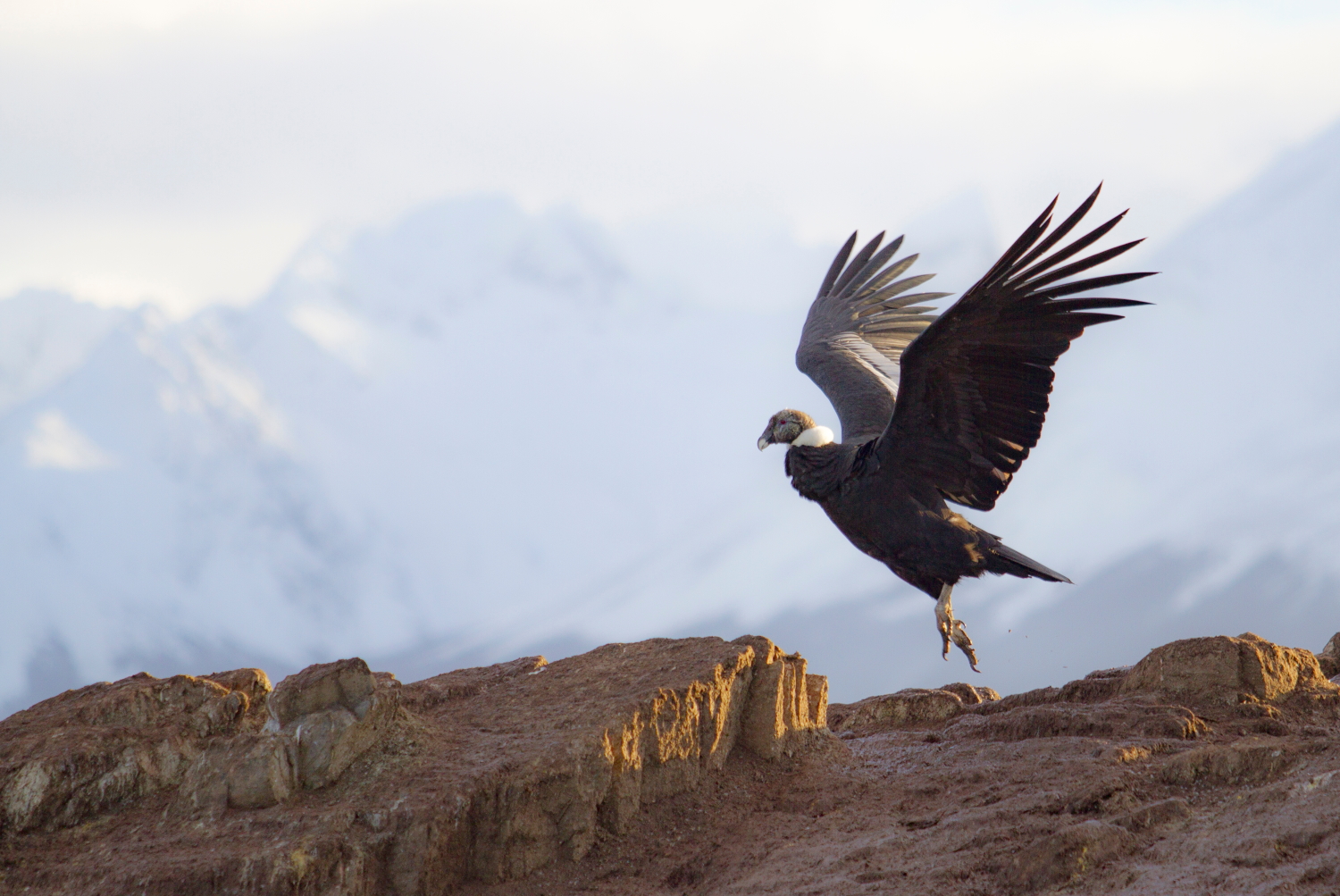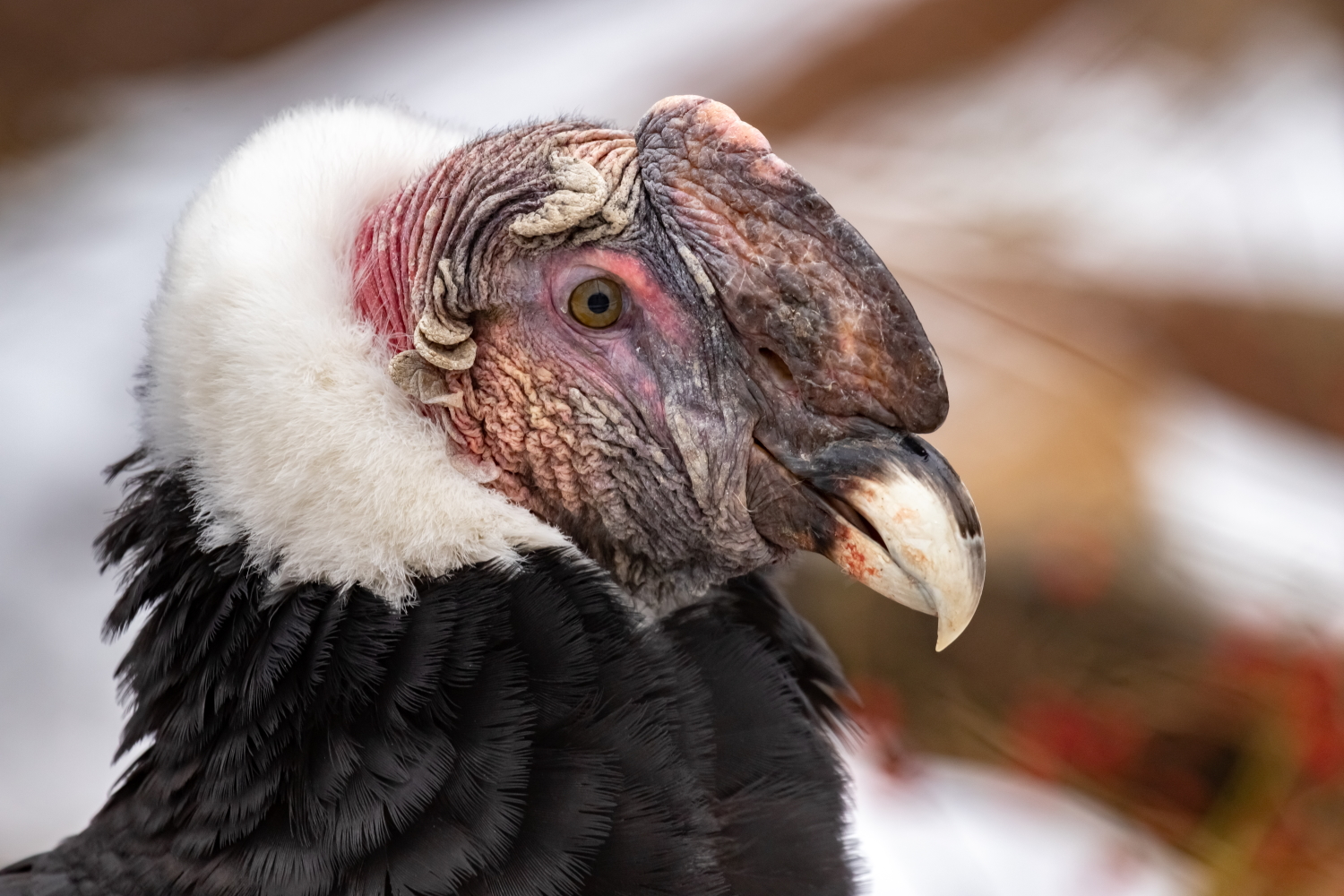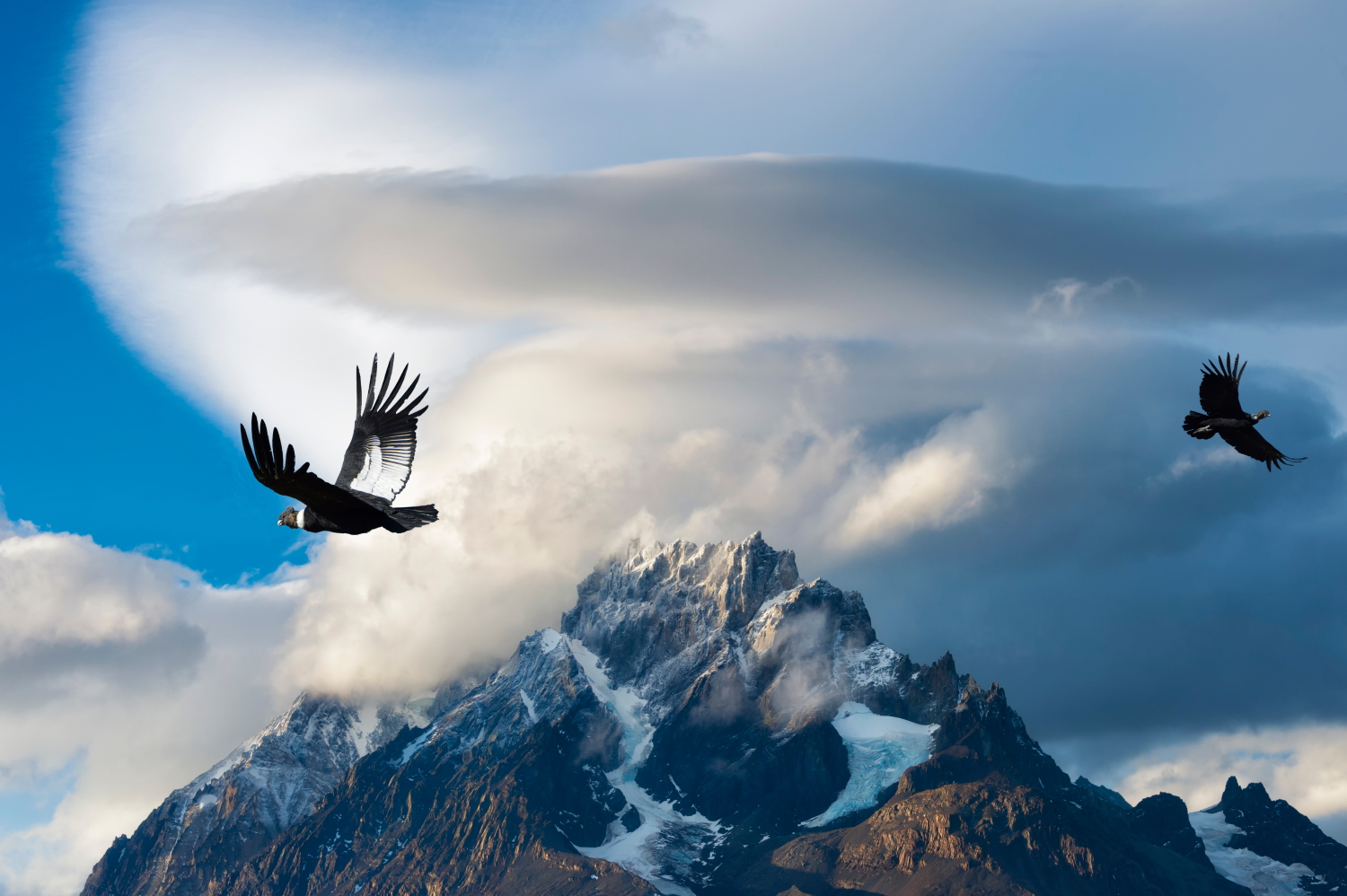The Andean condor (Vultur gryphus) is not your typical raptor. The Incas revered this massive bird of prey, believing it carried the sun into the sky each morning and served as a messenger to the gods. Sadly, those beliefs also led to harmful myths that persist today—some still claim its stomach cures breast cancer, roasted eyes improve vision or that keeping a feather under the bed wards off nightmares.
(function(d,u,ac){var s=d.createElement(‘script’);s.type=’text/javascript’;s.src=’https://a.omappapi.com/app/js/api.min.js’;s.async=true;s.dataset.user=u;s.dataset.campaign=ac;d.getElementsByTagName(‘head’)[0].appendChild(s);})(document,123366,’ch8fdokcux5mjskjbeuq’);
With a 9- to 11-foot wingspan that allows them to soar for up to 100 miles without flapping once, these birds are natural wonders. They’ve held a place in Andean art since 2500 B.C., their vast silhouettes etched in myth and memory alike.

A First Glimpse in Patagonia
I’ll never forget the first time I saw an Andean condor. I had just moved to Patagonia and was lying in a hammock in my backyard when I noticed strange shadows moving across the ground. Looking up, I saw a bird circling higher and higher until it seemed to reach airplane heights. I couldn’t comprehend how something so distant could still be visible.
That moment sparked a lifelong fascination. Over time, I learned that this raptor—revered in Andean mythology and now the national symbol of Peru, Chile, Argentina, Ecuador, Colombia and Bolivia—is truly a creature of the heavens.
Wings Built for the Wind
Those legendary wings rank among the largest in the bird world—surpassed only by certain albatross and pelican species. If you’re lucky enough to see one on Wild Patagonia: Peaks, Glaciers & Pumas, you’ll notice how they perch with wings spread, soaking up sunlight. Juvenile feathers are brown, turning black and white around age six.
The wingtips act like airplane flaps, helping them glide with precision. Because condors can weigh up to 33 pounds, they rely on strong winds and thermals to stay aloft. You’ll find them soaring along the Andes, coasts with steady ocean breezes, and even the Atacama Desert, where warm air currents rise in waves. A condor may flap its wings only once an hour as it rides those invisible rivers of air.
Nature’s Essential Recyclers
Andean condors play a crucial ecological role as nature’s clean-up crew. They prefer wide-open landscapes where carrion is easy to spot and consume everything from deer and llamas to rabbits and foxes. By feeding on dead animals, they prevent disease outbreaks such as anthrax and botulism.
Along the coast, condors feast on dead marine life, from fish to seals. Though they lack sharp talons, they sometimes raid nests for eggs or chicks. After devouring up to 15 pounds of meat, they often rest for hours, too heavy to fly.
Misunderstandings about their scavenging role have fueled persecution, and today, only about 6,700 remain in the wild.

Courtship, Color and Lifelong Bonds
Unlike most birds of prey, male Andean condors are larger than females. Males weigh 25–33 pounds and sport a comb atop the head with yellow eyes, while females weigh 18–24 pounds and have red eyes—a distinction known as sexual dimorphism, unique among New World vultures.
During courtship, males perform a colorful display: their necks flush from red to bright yellow as they inflate the skin and strut with wings outstretched, hissing and clicking their tongues. Condors can’t sing—they lack a syrinx—so these sounds are their form of serenade.
Pairs breed slowly, raising one chick every other year and caring for it for a full year. If an egg is lost, the female can lay another, a trait leveraged in captive breeding to help restore populations.
Threats and Longevity
Condors can live up to seventy years—a lifespan that has long linked them to myths of immortality. Unfortunately, that same symbolism has made them targets for poaching and ritual killing. Habitat loss, pesticide use and lead poisoning from ingesting bullet fragments further threaten the species.
As human activity pushes them from traditional nesting cliffs, their range continues to shrink, making conservation efforts more urgent than ever.

Where to See Andean Condors in Patagonia
If spotting a condor is high on your wish list, not all of Patagonia offers equal opportunities. The region’s flat steppes lack the rising thermals condors need to soar. For the best sightings, head to Torres del Paine National Park, where cliffs and strong winds create perfect flying conditions.
The park’s abundant guanacos—close relatives of llamas—also attract condors, providing natural feeding opportunities. Watch for them soaring between 8–10 a.m. and again 3:30–4:30 p.m., when they’re most active.
Pack your wind gear, camera and binoculars, and prepare to witness why these sacred birds have inspired awe for millennia.
The post Meet the Andean Condor, the King of the Andes first appeared on Good Nature Travel Blog.